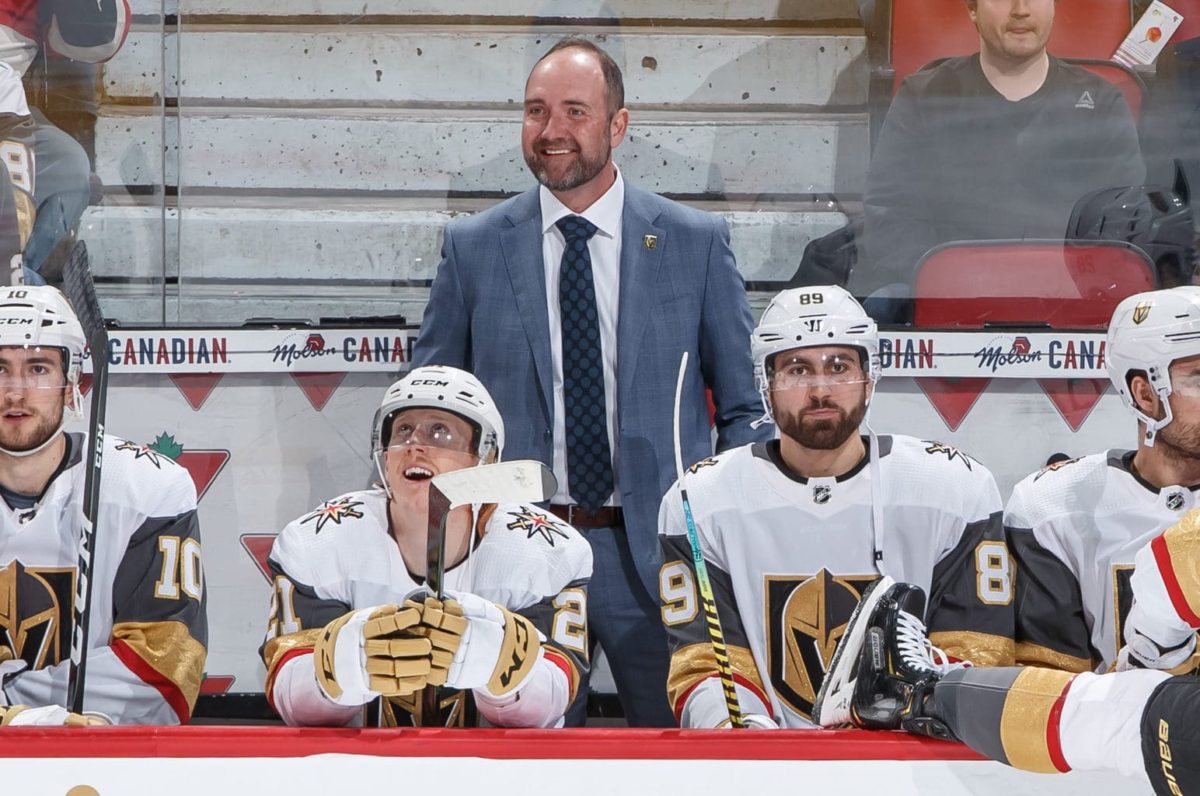When the Anaheim Ducks drafted Shea Theodore 26th overall in the 2014 NHL Entry Draft, they thought they were picking up their next franchise defenseman. While their pick did evolve into just that, it was for a different franchise: the Vegas Golden Knights. While it may seem premature to call Theodore a franchise player at the young age of 25, it’s impossible to ignore the fact that he has been progressing towards that role since landing in Sin City, and has cemented it over the course of these 2020 Playoffs.
Related: NHL 600-Goal Club
Theodore’s stellar performance throughout the postseason comes as no surprise when you consider the circumstances in which he was thrust into the NHL. During his time in Anaheim, he had played a mere 34 games before being called into action for the team’s playoff run in 2017 after Cam Fowler was injured.

The sudden uptick in responsibility did not appear to faze Theodore, as he even found himself filling in for Fowler on the first power-play unit. Through his first seven playoff games, the young Canadian recorded seven points. Seemingly out of nowhere, Theodore became a feature on the Ducks’ already crowded blue line, proving that pressure really does make diamonds.
Vegas Bound
After falling to the Nashville Predators in the Western Conference Final, the Ducks were faced with a dilemma: they had too many good, young defensemen and there was an expansion draft looming. This ultimately led to the club deciding to trade Theodore, as part of a deal with Vegas, in exchange for the new team selecting Clayton Stoner, thus protecting another Anaheim blueliner, Josh Manson.
In hindsight, the Ducks would probably have liked to redo that deal, but at that time, it looked like the right move. Theodore was exceptional in the sweep of the Calgary Flames but struggled the longer the playoffs went on, and was subsequentially scratched a few times against Nashville. He did rack up eight playoff points compared to Manson’s three, despite playing three fewer games.
The expansion rules themselves also played a big role in who the Ducks decided to lose. Anaheim had a core of nine guys who helped them make two conference final appearances in three years. They also had four guys on no-move clauses. While three of them were part of that core, the other was Kevin Bieksa, meaning that right away the team was protecting a player they would have been willing to lose. They employed the 7-3-1 model of protection, because of their depth of talent up front.

This did force them to leave talent exposed on defense, in both Theodore and Manson. Since Manson had been playing more solid minutes with the team, he had become part of the defensive core. General manager Bob Murray decided to offer up the player who had yet to make himself a part of the defensive core but had the potential to be a top defenseman for years to come. In his eyes, it was a question of who was more easily replaceable, and he elected to stick with experience and hope one of his other young guns could take Theodore’s spot.
To say that the Golden Knights made out like bandits after the deal would be an understatement. Over the course of the Knights’ inaugural season, Theodore was second in average ice time at 20:21, while being a feature of their first power play, en route to racking up 29 points in the regular season, and 10 throughout the team’s historic 2018 Stanley Cup Final run.

Theodore’s trajectory continued to rise during the 2018-19 season, as he hit career highs in goals, assists, and points, solidifying himself as a strong two-way player. On top of his prolific individual play, Theodore became a key to the team’s game as a whole. With the exception of Jon Merrill, every defenseman who was paired with Theodore saw their Corsi for percentage increase.
In essence, Corsi is an analytic used to measure a team’s shot attempt differential during even-strength play when a particular player is on the ice. Corsi is the best metric to use when looking at how much a team has the puck. The lower a player’s Corsi for percentage, the less his team has the puck, therefore the more likely they are to spend more time in the defensive zone.
In terms of what it actually means for Theodore’s defensive partners to have had their Corsis increased by playing with him…well it means they’re playing less defense. Higher Corsi means more shot attempts and more shot attempts typically lead to more goals, thus more wins. So not only is he a big help when the team is on the defensive, he is a leading force in making sure they’re spending less time defending and more time scoring.
Only Getting Better
Theodore carried that momentum into the shortened 2019-20 season, where he again set career highs in goals (13), assists (33), and points (46) while being on the ice 158 more minutes than his teammates. And again he elevated the play of those who were paired with. When Theodore started the season with Nick Holden, he helped him raise his game from that of a healthy scratch at the end of the 2018-19 season, to being a bright spot during Vegas’ early-season struggles.
When new head coach Peter DeBoer was brought in, many were excited to see how Theodore’s offensive abilities would grow, as DeBoer had lengthy experience with one of the league’s most prolific offensive defensemen, Brent Burns. The new bench boss admitted that he didn’t have plans to make Theodore an offensive focal point, but wasn’t given much choice when he saw the blueliner’s skills, saying they dictated the decision.

All of that set the stage for the 2020 Playoffs, where nothing is predictable, except maybe Theodore’s dominance. Looking at the high-pressure, playoff situation that gave Theodore his start in the league, combined with his steady growth, both as an individual and as a leader, his four goals and three assists across eight playoff games thus far start to look like less of a plot twist, and more like perfectly on the script.
The Specifics
The biggest element of Theodore’s game that has allowed him to put his name on these playoffs is his vision in the offensive zone. Call it instinct or developed ability, Theodore is one of the best in the business when it comes to offensive defensemen. As the quarterback of the first power-play unit, he is able to shine, seemingly always knowing when to use his lethal release versus when to set him up an open teammate, en route to a career-high in power-play points with 16.
Another element of Theodore’s game that has allowed him to blossom is his play without the puck. When assistant coach, Ryan McGill, first saw Theodore during training camp, he said he was struck by his God-given ability and skill levels. Furthermore, McGill elaborated that when Theodore doesn’t have the puck, he becomes a dynamic and determined player, who while he may not be the biggest guy, he is a strong individual who puts himself in a position to bring his team success.
Related: The Sutter Family Has Deep Roots in Alberta Hockey
Theodore’s experience of being thrust into prominence amidst the pressure cooker of the playoffs, combined with his natural talent and offensive instincts have poised him to have a breakout moment in this league at some point in time. We have finally reached that point with these 2020 Stanley Cup Playoffs where we are watching the culmination of his growth take flight.